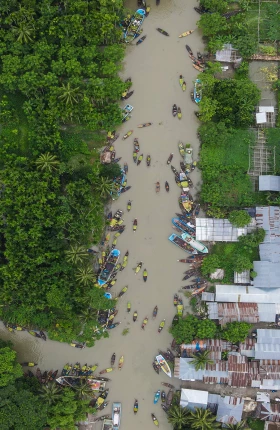The economic and human costs of climate change are rising sharply. In the most exposed regions, damages could reach up to 19% of GDP by 2050. Yet, while global awareness has grown, the systems and investments needed to build resilience lag far behind. Developing countries alone will require more than $380 billion in annual adaptation funding by 2030. Current flows are less than one-fifth of that and mostly from public sources. Private capital remains largely untapped, constrained by fragmented planning, limited project pipelines, and uncertainty over returns.
BCG’s new report, Actions to Mobilize Investment in Adaptation and Resilience, offers a practical roadmap for closing this gap. It outlines how governments, investors, and private enterprises can align around a shared agenda for adaptation—one that turns strategies into pipelines of credible, fundable projects.
From Plans to Investable Action
The report identifies ten actions to mobilize investments in climate adaptation. These actions are supported by specific case examples from across the world. Real-world case studies—from Nepal’s locally led planning to Indonesia’s nature-based coastal defense and the Philippines’ national adaptation investment platform—demonstrate how these principles can move adaptation from planning to implementation while creating economic opportunity.

Stay ahead with BCG insights on climate change and sustainability
Who Drives It—and How to Make It Work
Adaptation cannot be achieved by any one actor. The report maps the ecosystem of stakeholders—from national governments and financiers to SMEs, communities, and insurers—and defines the distinct roles they must play to drive progress.
It also outlines enabling systems required to move from ambition to execution: stronger governance, cross-sector policy alignment, country and regional platforms for orchestration, and robust monitoring and learning systems to build funder confidence.
A Call to Coordinated Action
Scaling climate resilience demands coordination as much as capital. Every stakeholder—from policymakers to investors—has a role in bridging the divide between climate plans and real-world implementation.
The report is both a call to action and a guide for building the ecosystems that make adaptation investable. It highlights where progress is possible today, and how the next decade can shift adaptation from reactive necessity to proactive opportunity.
Explore the full report to learn how public, private, and philanthropic actors can align around a shared agenda for climate resilience.
The authors thank the following colleagues for their contributions to this article: Vanessa Bauer-Zetzmann, Jamie Bawalan, Steven Chen, Andrew Claerhout, Michael Custer, Sophie Dejonckheere, Greg Fischer, Sahradha Kaemmerer, Olayinka Majekodunmi, Dean Muruven, Tolu Oyekan, Varad Pande, Christian Xia, Annika Zawadzki, and Ali Ziat.






